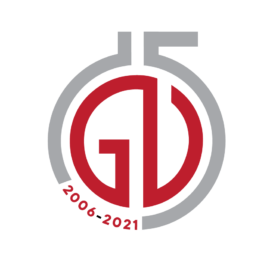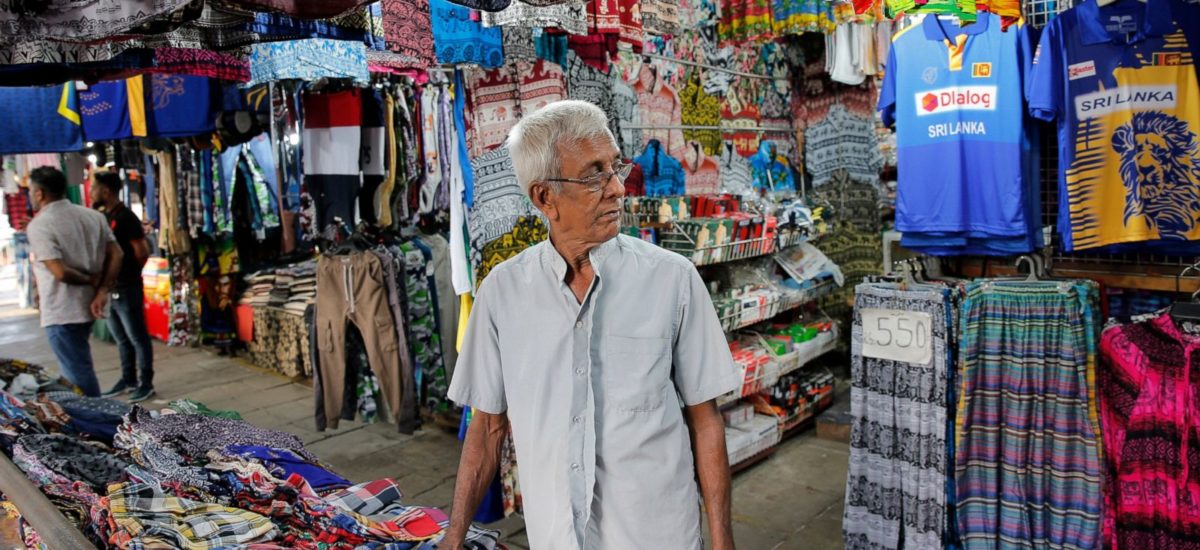Photo courtesy of ABC News
At the time of gaining independence 74 years ago, Sri Lanka was a prosperous country that was recognised as a model economy with a per capita income of $120, on par with Japan. At that time, the per capita income of South Korea was $86. The per capita incomes of the three countries today are Japan $40,113, South Korea $31,489 and Sri Lanka $3,682.
Being a democratic country, Sri Lanka conducts elections every five years. Elections have changed either the political party in power or the head of the country with or without a change of the party. Political ideology and the economic vision of each party as well as each head have been different from one another. As a result, the country was deprived of having continuing constant economic policy. Prime Minister Sirimavo Bandaranaike’s economic policy was different from that of S.W.R.D. Bandaranaike’s. President Gotabaya Rajapaksa’s economic policy differs from Mahinda Rajapaksa’s. However, in 1977 President J. R. Jayewardene’s Government introduced the open market economic policy. Since then, every successive Governments have adhered to that policy but with emphasis on different aspects. President Ranasinghe Premadasa placed emphasis on regional development and poverty alleviation. President Chandrika Kumaratunga wanted to give a human face to the open economic policy. The Rajapaksa Governments placed emphasis on infrastructure development. The Yahapalanaya Government was interested in good governance and a social market economy within the framework of an open economic system.
The current Government has not deviated from the open economic policy. In its policy framework – Vistas of Prosperity and Splendor – emphasis is placed on strengthening the domestic economy. The traits of this are found in policies adopted and programmes implemented during the year of its rule. The Government has imposed restrictions on selected imports including non essential items and chemical agriculture inputs. Whatever the hidden motives, the declared intention is protecting and promoting domestic production. Mere restrictions on imports do not automatically promote domestic production. It needs a well designed, time bound and targeted road map. It is missing.
Let us look at the ban on importation of inorganic agriculture inputs. The country, the farmer, the soil and the improved varieties of seed and planting materials are familiar and responsive to inorganic inputs. As such, transformation of farming from inorganic to organic would take years if not decades. The immediate impact of this move would be negative on farmer employment and income as well as on food availability, security and the price. In the long run, some farmers would give up farming; both the volume and value of exports would decline and country would resort to importation of (non organic) food items to satisfy the domestic demand.
President Rajapaksa’s announcement of achieving 100 per cent organic farming was a stone thrown at a hornets’ nest. Experts, non experts, practitioners, farmers, planters, smallholders, consumers got active and reactive. They filled the television screens, social media and newspaper columns. Pseudo experts have been in the forefront. They cite agriculture practices adopted during the period of King Parakramabahu and the Granary in the East, health, nutritional and environmental benefits and much rhetoric in promoting organic farming. Consumer preference, sensitivity to food price, food security, food promotions, taste, habits, affordability and availability are immaterial to them.
The other category consists of genuine experts and practitioners in agriculture. They have learnt, studied, and conducted research, experiments, tests and practiced farming and agriculture. They agree that organic farming need to be promoted but should not be rushed. They are of the view that the move needs careful planning with a clear roadmap and takes time. It is not an overnight affair that can be achieved with a single pen stroke.
Conversion from inorganic to organic is meritorious and welcome but has to be done in a systematic, scientific manner based on research and lesson learning rather than rhetoric and emotion. This is a classic example for implementation of a good policy done in the bad way.
The COVID-19 pandemic and the weather have derailed the Government programmes. Closure of institutions and restrictions on movement curtailed goods and services production; employment of thousands was lost; micro finance activities came to a virtual halt; and transactions, transportation and transfers were suspended. The Government was compelled to expand the coverage of welfare programmes to support poor, unemployed, job losers and the disabled. The Government’s welfare budget shot up. Remittances from migrant workers dropped drastically. As a result, there were serious impacts on fiscal and monetary policies.
The Central Bank maintained an easy money policy. It printed money at unprecedented levels; it reduced the interest rates; it brought down reserve ratio; it gave debt moratorium to borrowers; and it facilitated both the lenders and borrowers. But the policy makers have not realised that in Sri Lanka the bigger issue is the absence of entrepreneurship. In both formal and informal sector there is a thriving business community but they are not entrepreneurial, they don’t run risks. They do transfers, they speculate and they depend on family labor and land. They are risk averters rather than risk takers. They don’t believe in expansion, diversification and value addition. The easy money policy of the Central Bank has helped the survival of the business community. It did not assure the sustenance and boost of investment. The impacts are losses and overburdens to lending institutions.
Vistas of Prosperity and Splendor is a display of linguistic skills rather than a policy document; it lacks the holistic picture required for a policy framework. This is reflected in the ad hoc nature in implementation. A fully fledged, well drawn economic policy with programmes and targets is missing. The Government has come to power with vague views on the economy and without a comprehensive macro picture.
There is no consistency in most of the policies and programmes implemented by the Government – no continuation, no coordination, no direction, no review, no monitoring and no follow up. This has led to bad implementation of good things. Sometimes too much attention is given to macro picture at the expense of micro picture and vice versa. For instance coconut cultivation, which has been neglected for years, needs a well designed comprehensive programme but the policy document talks of introducing a machine for coconut plucking. There are three organizations responsible for coconut development along with several ministries as well as Agriculture Faculties in several universities but the issue of coconut is seen in plucking.
One of the key policies of the Government is infrastructure development and modernisation. It has launched a programme of modernisation and beautification of 100 selected towns and a highway development programme with much publicity. These programmes would consume a sizeable quantum of money with little or no impact upon majority of the population. Policy makers and politicians believe that infrastructure development would accelerate and boost investment. But modernisation and infrastructure development would not negate other negative factors stand against investment promotion. Bureaucratic lethargy and institutional inflexibility are hindrance to investment promotion. An investor undergoes harassment, inordinate delays and payment of commissions leading to cost escalation. These are discussed in the Ease of Doing Business Index of the World Bank. Sri Lanka is ranked 99 and behind India (63), Bhutan (89) and Nepal (94). The Government has chased behind visibility ignoring the importance of improving the ease of doing business.
Some policies have emerged suddenly from nowhere. Transformation to renewable energy and organic agriculture came without any warning or preparation. They are sound policies but public should not be taken by surprise. This will confuse investors, lenders and the public. These announcements should be followed by well prepared programmes including training and awareness.
State Owned Enterprises (SOEs) suffer from many ailments. They don’t produce expected results. They have misplaced emphasis. They believe in input based programmes rather than outcome based ones. The Government policy document states that a new mechanism would be introduced to select heads of SOEs on merits and leadership abilities. A selection panel was appointed, applications were called and a large number of eligible candidates applied. They did not get even an acknowledgement. They came to know that some members of the selection panel got themselves appointed for some SOEs while others were members of Viyath Maga.
The pandemic, floods and the ship disaster pushed the Government towards crisis management and recovery rather than following a consistent economic policy aimed at full employment, growth and development. While accepting that, we must question what policy initiatives were taken by the Government to manage and overcome the crises. It seems to be lost between priorities; post pandemic economic recovery, debt management, the foreign exchange crisis, currency depreciation, stoppage of remittances from Middle East employment, exports and tourism have created new challenges. Although the Government is keen to overcome them, it is confused and lost. The Government has placed all the problems in one basket and look for solutions for the basket but has failed to separate them and come out with solutions for each individual problem. The Government policy treatment is for symptoms and not for the causes. In some instances the Government has misidentified causes and prescribed wrong treatment.
I would like to conclude with what the World Bank has to say in its Sri Lanka Development Update 2021 report: “The government took proactive measures to mitigate the impact of the pandemic. Despite limited fiscal space, resources were allocated (approximately 0.7 per cent of GDP) for health measures, cash transfers, and postponed tax payments. While public expenditures increased, revenues declined, resulting in a widening of the fiscal deficit in 2020. Due to the economic contraction and the elevated fiscal deficit amid COVID-19, public and publicly guaranteed debt is estimated to have increased to 109.7 percent of GDP. In line with the government strategy to reduce external debt over the medium-term, debt financing relied increasingly on domestic sources.”
The writer is a Vice President of Sri Lanka Economic Association


